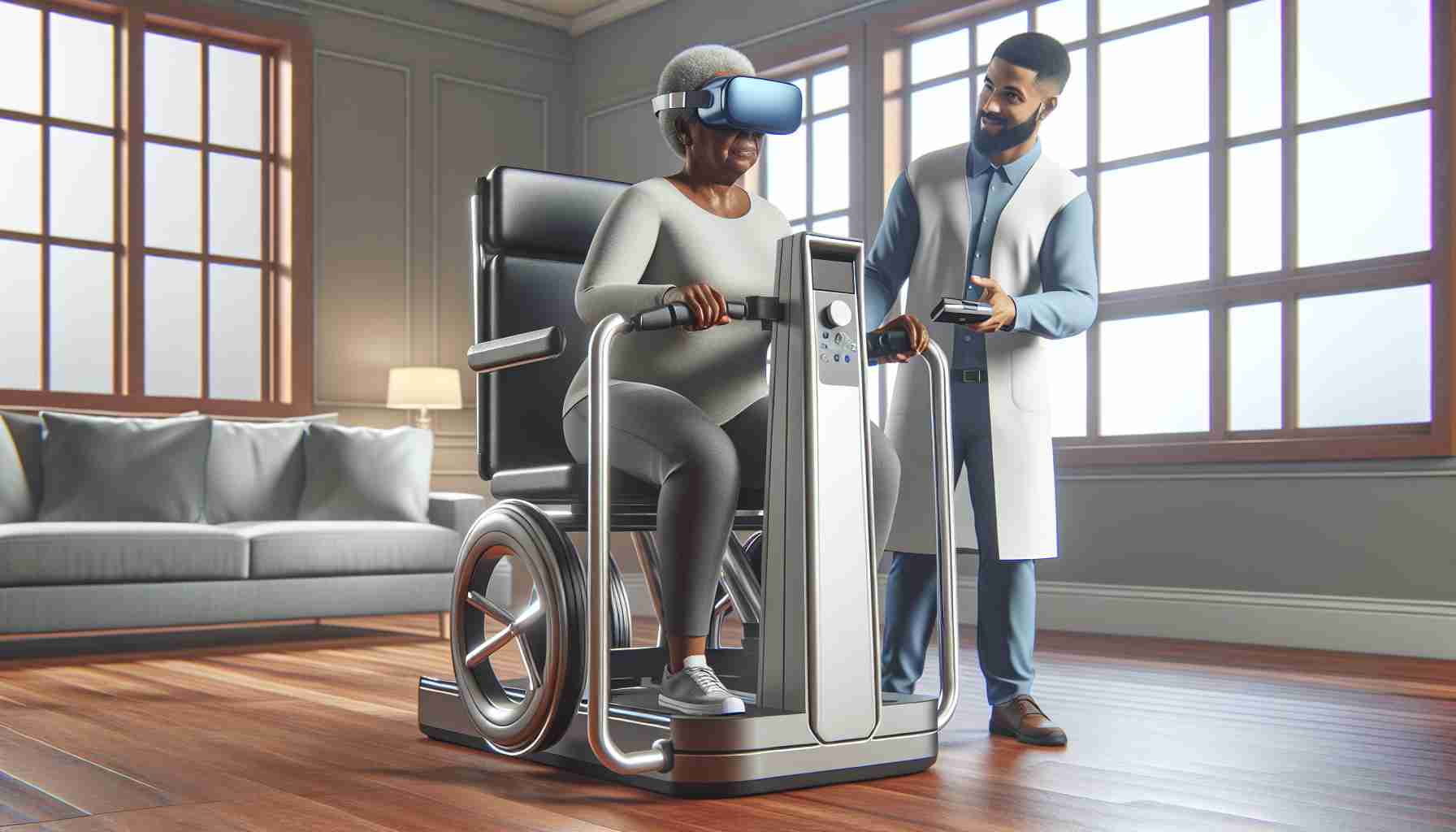In the town of Greer, South Carolina, groundbreaking technology is transforming rehabilitation for patients dealing with vestibular disorders. A striking example is Lisa McCully, who is regaining her strength and balance through an immersive virtual reality program. Over the past decade, McCully has battled BPPV, a rare ear condition that triggers severe episodes of vertigo, leading to multiple injuries from falls.
Describing her initial experiences with vertigo, McCully recalls the terror of suddenly feeling disoriented and losing control. She recounts a particularly harrowing incident where she suffered a serious injury due to a fall. The fear that came with such episodes left her anxious and hesitant in daily life situations, particularly in crowded places.
However, three months ago, McCully’s journey took a positive turn when she began working with a physical therapist at Gibbs Cancer Center – Pelham. Utilizing virtual reality, therapists can simulate various settings that help patients practice balance and reflexes safely. The technology not only aids in therapy but also provides patients like McCully a chance to reclaim activities they once loved.
Joyfully, McCully shares her recent milestone of riding a horse after three years, an experience that was both exhilarating and emotional. With ongoing therapy, she feels more equipped to manage her condition and navigate her recovery. With programs like these, Spartanburg Regional Health is also hosting fall prevention workshops to further support community health initiatives.
Innovative virtual reality (VR) therapy is reshaping the landscape of rehabilitation, particularly for patients suffering from vestibular disorders. Beyond the individual stories, there are broader implications and considerations that are relevant to this topic.
Key Facts:
– Versatility of VR Therapy: VR therapy isn’t limited to vestibular disorders. It has shown promise in various fields such as stroke rehabilitation, traumatic brain injuries, and even psychological conditions like PTSD.
– Research and Efficacy: Studies have indicated that patients undergoing VR therapy often experience faster recovery times and improved outcomes compared to traditional rehabilitation methods.
– Accessibility Challenges: While VR can be a powerful tool, access to this technology can be limited by cost, availability of equipment, and the need for trained personnel.
– Patient Engagement: VR therapy often leads to higher patient engagement due to its immersive and interactive nature, which can increase motivation for rehabilitation.
Important Questions and Answers:
1. What is the mechanism by which VR aids in rehabilitation?
VR programs facilitate controlled exposure to environments that challenge balance and coordination, allowing patients to practice skills in a safe setting.
2. Are there specific types of vestibular disorders that benefit more from VR therapy?
Initial findings suggest that conditions like BPPV, vestibular neuritis, and other balance-related disorders see marked improvement with VR rehabilitation.
3. What are the mental health benefits associated with VR therapy?
Beyond physical improvements, VR therapy can help reduce anxiety and fear related to movement challenges, helping patients build confidence.
Key Challenges and Controversies:
– Safety Concerns: There can be risks associated with VR therapy, particularly if patients are unsteady or have severe symptoms. Safety protocols need to be strictly followed.
– Technological Barriers: The reliance on technology can be a double-edged sword; those who lack familiarity with tech may feel excluded from treatment options.
– Cost and Insurance Coverage: The cost of VR therapy sessions and equipment can pose financial challenges, and insurance coverage for such therapies is not guaranteed, which can limit access for many patients.
Advantages of VR Therapy:
– Personalization: VR environments can be tailored to meet the specific needs of each patient, allowing for a more personalized rehabilitation experience.
– Engagement: The gamified aspects of VR can make therapy sessions more enjoyable, leading to increased participation and effort from patients.
Disadvantages of VR Therapy:
– Physical Discomfort: Some patients may experience discomfort or motion sickness while using VR technology, which can hinder their ability to engage with the therapy.
– Not a Replacement for Traditional Therapy: While VR is a valuable tool, it may not entirely replace traditional rehabilitation methods and should be viewed as a complementary approach.
For those interested in further exploring virtual reality in rehabilitation, consider visiting the following link: American Physical Therapy Association.
As VR technology continues to develop, its application in rehabilitation is bound to expand, offering hope and innovative solutions for patients like Lisa McCully and many others facing similar challenges.






















